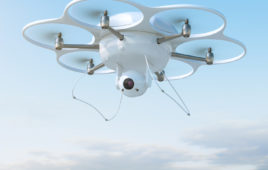The University of Bath is testing a number of waste materials to assess their thermal performance as potential materials for insulating buildings. This collaborative project between the University of Bath, University of Brighton, UniLaSalle in Rouen (France) and five other academic and non-academic partners, and funded under the Interreg VA France (Channel) England programme, is…
Morphing Twisted Nanoscale Objects To Tailor Applications In Future Technologies
For the first time scientists have created a way to model the interaction between light and twisted molecules, as these molecules transition from left- to right-handed versions, or vice versa. The transitional forms offer a deeper insight into material symmetries and their unexpected behaviour could lead to improved design of telecoms components. Many molecules, including…
Plastic Made from Sugar and Carbon Dioxide
Polycarbonates from sugars offer a more sustainable alternative to traditional polycarbonate from BPA, however the process uses a highly toxic chemical called phosgene. Now scientists at Bath have developed a much safer, even more sustainable alternative which adds carbon dioxide to the sugar at low pressures and at room temperature. The resulting plastic has similar…
New Research On Northern Lights Will Improve Satellite Navigation Accuracy
Researchers at the University of Bath have gained new insights into the mechanisms of the Northern Lights, providing an opportunity to develop better satellite technology that can negate outages caused by this natural phenomenon. Previous research has shown that the natural lights of the Northern Lights — also known as or Aurora Borealis — interfere…
Could Hollywood Technology Help Your Health?
The same technology used by the entertainment industry to animate characters such as Gollum in The Lord of The Rings films, will be used to help train elite athletes, for medical diagnosis and even to help improve prosthetic limb development, in a new research centre at the University of Bath launched today (Friday 20 May).…
Robotic Drones to ‘Print’ Emergency Shelters For Those in Need
A new research project aims to develop the world’s first flying robots capable of autonomously assessing and manufacturing building structures to help areas suffering from natural disasters. The four year collaborative research project entitled ‘Aerial Additive Building Manufacturing: Distributed Unmanned Aerial Systems for in-situ manufacturing of the built environment’ involves researchers from the University of Bath, Imperial…





